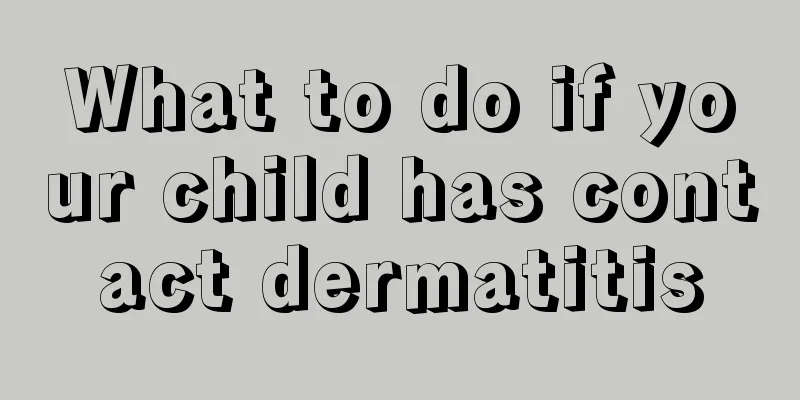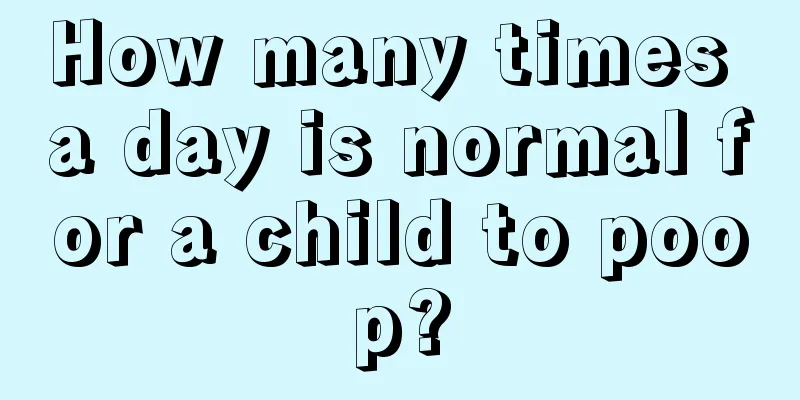What to do if your child has contact dermatitis

|
Children's contact dermatitis is likely an allergic symptom. For children, their immune systems are not yet fully developed and they are very susceptible to allergies. Parents should always pay attention to changes in temperature and humidity around their children, avoid exposing their children's skin to the sun, and apply moisturizer to their children appropriately in cold and dry seasons. Many parents also want to know what to do if their children have contact dermatitis. Let’s take a look at it below. The site and surrounding area of contact dermatitis in children are consistent with the contact object, and the boundaries are very obvious. It often occurs on exposed parts of the body, such as the back of the hands and the face. However, if the contact material is gas or dust, the dermatitis will be diffuse without clear boundaries. Sometimes the contacted object may be transferred to other parts of the body due to scratching, causing a similar rash. What should we do if children have contact dermatitis? Eliminating the allergenic factors is the first step in treating contact dermatitis. When a child comes into contact with an allergenic or toxic substance, the contacted area should be rinsed immediately with plenty of water. Avoid scratching, and do not wash with hot water or alkaline soap to avoid irritating the skin and aggravating the condition. Second, remember that whether using traditional cotton diapers or newer disposable diapers, babies and toddlers will wear several pairs of pants in the winter, which creates an airtight environment that is most likely to breed diaper rash. Therefore, parents must observe their children's urination and defecation in time. Once there is a "problem", the baby's butt should be washed immediately with warm water, but do not use soap. Instead, use non-irritating cleaning products specifically for infants and young children. After washing, let the baby's butt dry in the air-conditioned room for a while, and apply mild skin care products that do not contain irritants. Finally, what should children with contact dermatitis not eat? Children with contact dermatitis should not eat vegetables and foods containing photosensitive substances, such as celery, lettuce, rapeseed, spinach, amaranth, Chinese cabbage, sweet clover, gray vegetable, mustard greens, amaranth, purslane, safflower, figs, and sheep's foot root. Seafood, greasy, spicy and dry foods, such as hot pot, barbecue and fried foods, celery, leeks, onions, garlic sprouts, etc. are not allowed to be eaten. Hot fruits such as lychee, pineapple, mango, cantaloupe, durian, etc. are also not allowed to be eaten. Photosensitive foods such as fungus, cauliflower, tomato, etc. are not allowed to be eaten. When children have contact dermatitis, parents should choose shower gels that do not contain alkaline substances. It is best to bathe them with warm water. When bathing, the shower gel on the children's bodies must be rinsed off. Children should also be given more fruits and vegetables and less sweets and greasy foods. |
<<: What is the cause of the child's arrhythmia?
>>: What to do if your child has a cold, cough, or asthma
Recommend
What should I do if my child is very active in class?
Children are naturally very active and have a str...
Why is my baby's lower lip swollen?
Nowadays, babies are treated as the apple of the ...
What to do if your baby has a fever
The degree of fever in babies varies. Parents sho...
What are the dangers of children going barefoot?
There are many cases of children walking barefoot...
Why do children have convulsions?
People often experience convulsions in life. In c...
What causes acidosis in children?
Acidosis is a condition that usually occurs more ...
Recipes for how to make children grow taller
When it comes to height increase, many parents wi...
What is the correct way to care for your baby's face?
Children are the treasures of their mothers. Many...
Hearing delay in premature infants
Since premature babies are born before full term,...
How many months does the baby start to grab things?
The healthy development of the baby after birth i...
Reasons why children sweat when sleeping
After children go to bed, parents will still chec...
How can a child grow taller quickly?
Nowadays, children seem to be shorter in height t...
What are the symptoms of acute appendicitis in children?
There are many causes of acute appendicitis in ch...
How many months does the baby wear pull-up pants
Many parents like to use diapers for their childr...
What are the recipes for a three-month-old baby in a week?
When taking care of a baby at one week old or thr...









